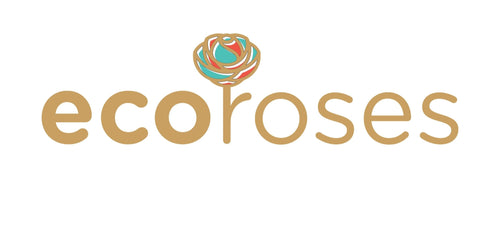Flowers are not only admired for their beauty but have also held a central role in human well-being for thousands of years. Across cultures and civilizations, flowers were more than decorative accents; they were medicine, ritual tools, and sources of spiritual energy. From Ancient Egypt to Traditional Chinese Medicine, people relied on the natural healing power of blooms long before modern pharmaceuticals. Today, as holistic wellness gains popularity again, these traditions offer insights into how flowers shaped ancient medicine and still influence our practices today.
1. Ancient Egypt: Flowers for Ritual and Healing
Egyptian civilization is one of the earliest to document the use of flowers for healing.
-
Lotus (Nymphaea caerulea): Known as the sacred blue lotus, it was widely used in ceremonies for its psychoactive properties. Egyptians infused it into wine and used it as a mood enhancer.
-
Chamomile: Employed for fevers and calming the nervous system, chamomile was so treasured it was dedicated to the sun god Ra.
-
Hibiscus: Infusions of hibiscus flowers were consumed to reduce body temperature, refresh the body, and promote heart health.
Flowers were not just medicinal but also deeply spiritual, linking healing to the gods and the afterlife.
2. India and Ayurveda: The Holistic Power of Flowers
Ayurveda, one of the world’s oldest healing systems, extensively used flowers in herbal remedies, oils, and teas.
-
Jasmine: Used in oils to calm stress, enhance mood, and treat skin conditions.
-
Marigold (Tagetes): Known as “the flower of the sun” marigold was applied in wound care and digestive treatments.
-
Rose: Symbolizing love and purity, roses were used for balancing the heart, cooling the body, and soothing emotional pain.
Ayurveda emphasized balance between body, mind, and spirit, and flowers played a crucial role in maintaining this harmony.
3. Traditional Chinese Medicine (TCM): Blossoms for Balance
In TCM, flowers were essential in restoring the body’s qi (energy).
-
Chrysanthemum: Brewed into tea to reduce fever, improve vision, and detoxify the liver.
-
Peony: Valued for easing pain, regulating blood flow, and calming irritability.
-
Lotus: Both seeds and petals were used to calm the spirit and nourish the heart.
The philosophy centered on prevention, so flowers were part of daily diets and tonics for longevity.
4. Greek and Roman Medicine: Blossoms of Philosophy and Health
The Greeks and Romans combined medicine with philosophy, and flowers became central in their remedies.
-
Lavender: Used to heal wounds, ease insomnia, and purify the air.
-
Rosemary (with blossoms): Sacred to Aphrodite, rosemary flowers were used for memory enhancement and circulation.
-
Violets: Both a culinary delight and a remedy for headaches and respiratory problems.
Hippocrates, the “father of medicine,” advocated plant-based treatments where flowers were often the main ingredient.
5. Native American Practices: Sacred Floral Healing
Indigenous cultures of North America revered flowers as gifts from nature.
-
Echinacea (Coneflower): Used to boost immunity and fight infections.
-
Sunflower: Petals and seeds were incorporated into salves for wounds and respiratory issues.
-
Calendula: Petals were infused into healing teas and poultices for skin conditions.
Flowers were not just medicine but also symbols in ceremonies, embodying the connection between humans and the Earth.
6. Medieval Europe: From Monasteries to Folk Remedies
During the Middle Ages, knowledge of flowers for healing was preserved in monasteries and folk traditions.
-
St. John’s Wort (yellow blossoms): Widely used as a remedy for depression and nerve pain.
-
Chamomile and Lavender: Popular for calming teas and sleep aids.
-
Elderflower: Used in syrups for coughs and colds.
Herbalists, often women, passed down floral healing recipes through generations, keeping ancient wisdom alive.
7. Spiritual and Ritual Uses of Flowers in Healing
Beyond physical ailments, flowers were used in spiritual healing practices.
-
Incense & Perfumes: Burning floral resins and petals was believed to cleanse spaces of illness-causing spirits.
-
Flower Baths: Used in rituals to restore spiritual purity and calm the mind.
-
Amulets & Talismans: Wearing dried flowers for protection and good fortune was common in many cultures.
This holistic view of health considered emotional and spiritual well-being just as important as physical recovery.
8. Modern Science and the Return of Floral Healing
Today, scientific studies validate much of what ancient healers already knew. Essential oils, flower teas, and even modern pharmaceuticals derive compounds from flowers. For example:
-
Chamomile and lavender are proven to reduce stress and aid sleep.
-
Calendula is still used in skin care for its healing properties.
-
Rose extracts show antioxidant and anti-inflammatory benefits.
The renewed interest in herbalism, aromatherapy, and natural remedies is a return to floral healing practices of the past.
9. Why Ancient Floral Healing Still Matters Today
The role of flowers in healing highlights a universal truth: human health has always been tied to nature. In an age of chemical medicines, turning back to flowers offers:
-
Gentle, natural remedies.
-
A spiritual connection to wellness.
-
Eco-friendly alternatives to synthetic drugs.
Flowers carry not only beauty but also centuries of wisdom, and incorporating them into daily life can be both healing and meaningful.
Final Thoughts
The ancient world recognized flowers as powerful healers-symbols of divine energy, protectors of health, and balancers of the mind and body. From Egyptian lotus ceremonies to Ayurvedic rose tonics, these traditions remind us that flowers are more than ornaments-they are living medicine.
And while we may not grind petals into potions as our ancestors did, we can still embrace their healing power today-whether through aromatherapy, teas, or simply filling our homes with blooms. If you’d like to bring a touch of natural healing into your space, discover timeless floral beauty here.


